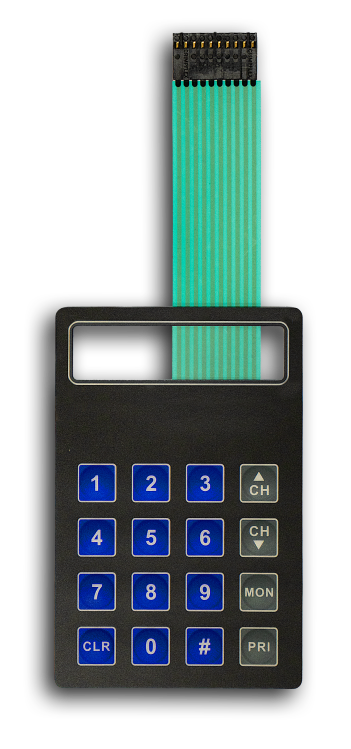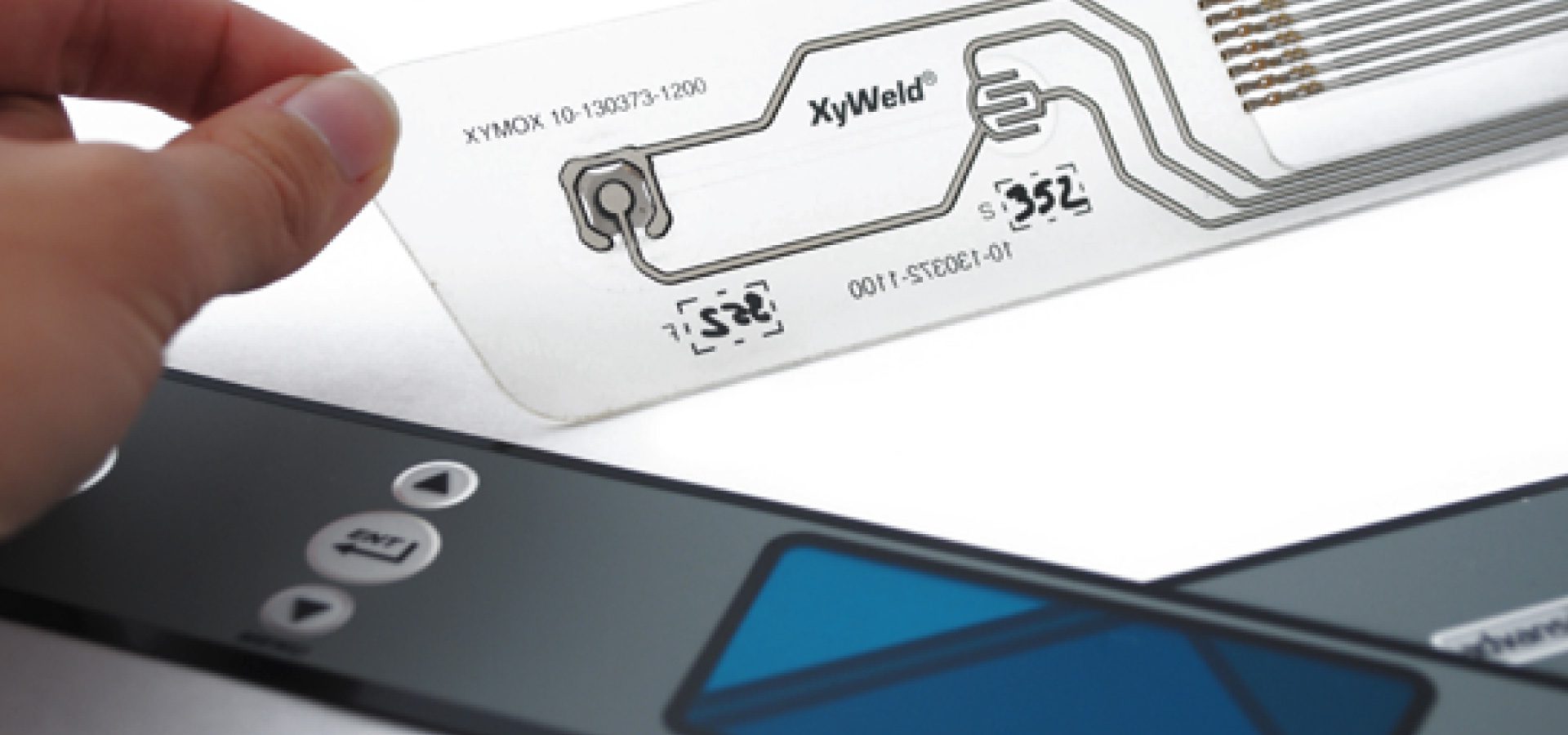The Environmental Benefits of Choosing Membrane Switches for Your Products
The Environmental Benefits of Choosing Membrane Switches for Your Products
Blog Article
Discover How Membrane Switches Feature and Their Duty in Modern Electronic Devices
Membrane Switches stand for an innovative combination of innovation and design within the world of contemporary electronics, working as crucial user interfaces in various devices. Consisted of multiple layers, these switches use pressure-sensitive mechanisms to facilitate user interaction. Their applications extend numerous markets, from consumer electronics to clinical tools, highlighting their flexibility and importance. Recognizing the intricacies of Membrane switch capability and their broader effects in improving customer experience invites more exploration right into their design, advantages, and the innovative advancements forming their future in innovation.
What Are Membrane Switches?

Membrane buttons are identified by their resilience and resistance to environmental aspects, such as dirt, wetness, and severe temperature levels. They can be personalized with numerous graphics, shades, and responsive responses alternatives, boosting customer experience while keeping visual allure - membrane switches. The consolidation of printed circuits allows for smooth assimilation right into gadgets, enhancing overall functionality.
The versatility of Membrane buttons is evident in their capability to sustain both complex and easy control functions. They can include attributes such as LED signs and touch-sensitive innovation, dealing with details customer demands. As technology continues to advance, Membrane Switches continue to be necessary for allowing intuitive and reliable interface, consequently playing a critical role in the innovation of contemporary digital gadgets.
Components of Membrane Switches
Membrane switches are made up of several key elements that collaborate to create a dependable and useful interface. The key aspects consist of the graphic overlay, glue layer, spacer layer, and conductive traces.
The graphic overlay functions as the interface, commonly printed on a versatile substratum such as polyester or polycarbonate. This layer not only supplies visual charm yet also consists of tactile comments, aesthetic cues, and protective attributes. Beneath the visuals overlay exists the adhesive layer, which protects the button to the device and makes sure resilience against ecological stresses.
The spacer layer is vital for keeping the required void in between the graphic overlay and the circuit layer. This space allows for the activation of the switch when stress is applied. The conductive traces, normally made from silver or carbon, create the electrical paths that finish the circuit when the switch is engaged.
Furthermore, a support layer might be consisted of for architectural support and insulation. These elements work together flawlessly, ensuring that Membrane switches are both resistant and straightforward, making them essential in different contemporary digital applications.
Just How Membrane Switches Work
How do Membrane Switches function properly within electronic gadgets? Membrane Switches run on the concepts of pressure-sensitive innovation, utilizing a split building that includes visuals overlays, adhesive layers, and conductive components.
The style of Membrane buttons is essential for their effective procedure (membrane switches). The layers are carefully crafted to supply tactile responses, sturdiness, and resistance to environmental aspects such as moisture and dirt. The inclusion of domes-- tiny, increased locations within the switch-- boosts tactile feedback, offering customers with a visible click experience upon activation
Furthermore, Membrane switches can be personalized in regards to dimension, shape, and graphics, making them appropriate for various applications. They are commonly used in control panels, medical tools, and consumer electronics as a result of their sleek style and integrity. In general, the reliable performance of Membrane buttons is critical in improving customer interaction and making sure smooth operation in modern Full Report electronic tools.

Applications in Modern Gadgets
Using their one-of-a-kind layout and functionality, Membrane switches have become important elements in a vast array of modern digital tools. These versatile user interfaces are used in consumer electronics, commercial tools, clinical tools, and automotive controls, providing smooth customer communication.
In consumer electronics, Membrane buttons are commonly located in devices like microwaves, cleaning equipments, and various other family gadgets, where they allow intuitive control with a sleek account. Their inconspicuous layout assists in combination into compact devices, boosting visual charm without compromising functionality.
In commercial applications, Membrane Switches work as control board for equipment, providing sturdiness and resistance to severe environments. Their capacity to stand up to moisture and contaminants makes them excellent for usage in manufacturing and handling markets.
Medical tools likewise gain from Membrane switches, which are made to be simple to clean and keep, making sure hygiene in professional setups. They are frequently used in analysis equipment, patient tracking systems, and portable clinical devices, where integrity is critical.
Benefits of Membrane Buttons
One of the crucial benefits of Membrane switches is their convenience, which enables them to be tailored for a variety of applications across multiple markets. These switches can be created in various sizes and shapes, fitting one-of-a-kind product needs while offering smooth assimilation into tools. Their thin profile makes it possible for a sleek and small style, often improving the visual appeal of electronic items.
Another considerable benefit is their resilience - membrane switches. Membrane buttons are generally resistant to dust, wetness, see here and chemicals, making them ideal for severe settings. This resilience extends their life expectancy contrasted to traditional mechanical switches, minimizing the demand for frequent replacements
Furthermore, Membrane Switches deal cost-effectiveness. The production procedure involves printing technologies that reduce production costs, especially for big runs. This cost, incorporated with reduced upkeep needs, makes them an attractive option for producers.

Final Thought
In final thought, Membrane Switches represent a significant innovation in individual interface technology within modern-day electronic devices. As the demand for user-friendly and resilient interfaces proceeds to grow, the duty of Membrane buttons in shaping user experience will most certainly broaden.
Membrane Switches stand for an advanced integration of modern technology and about his style within the world of contemporary electronic devices, serving as crucial interfaces in countless gadgets.In the world of modern electronic devices, Membrane Switches serve as vital components that promote user communication with devices. As innovation continues to progress, Membrane Switches stay essential for allowing intuitive and effective individual interfaces, therefore playing a pivotal function in the innovation of modern electronic tools.
How do Membrane Switches feature efficiently within digital tools? In general, the effective performance of Membrane switches is critical in improving customer communication and ensuring seamless operation in contemporary digital tools.
Report this page